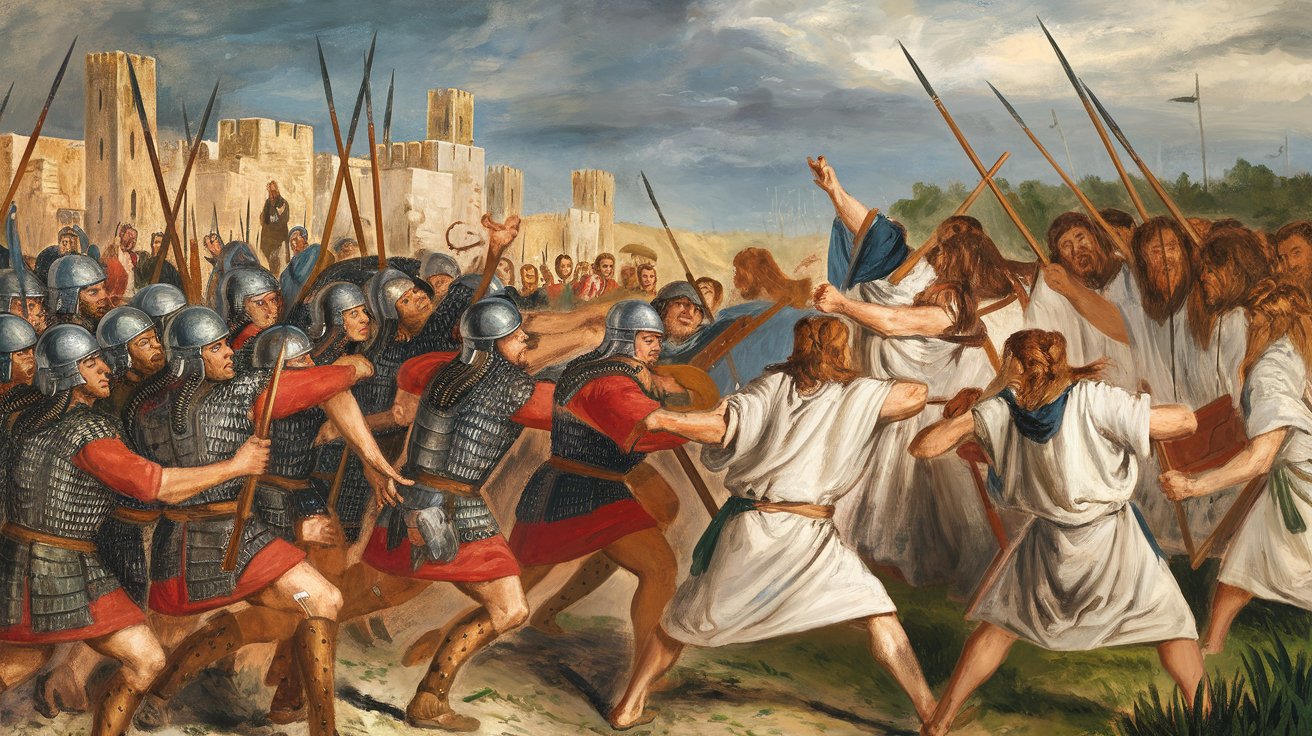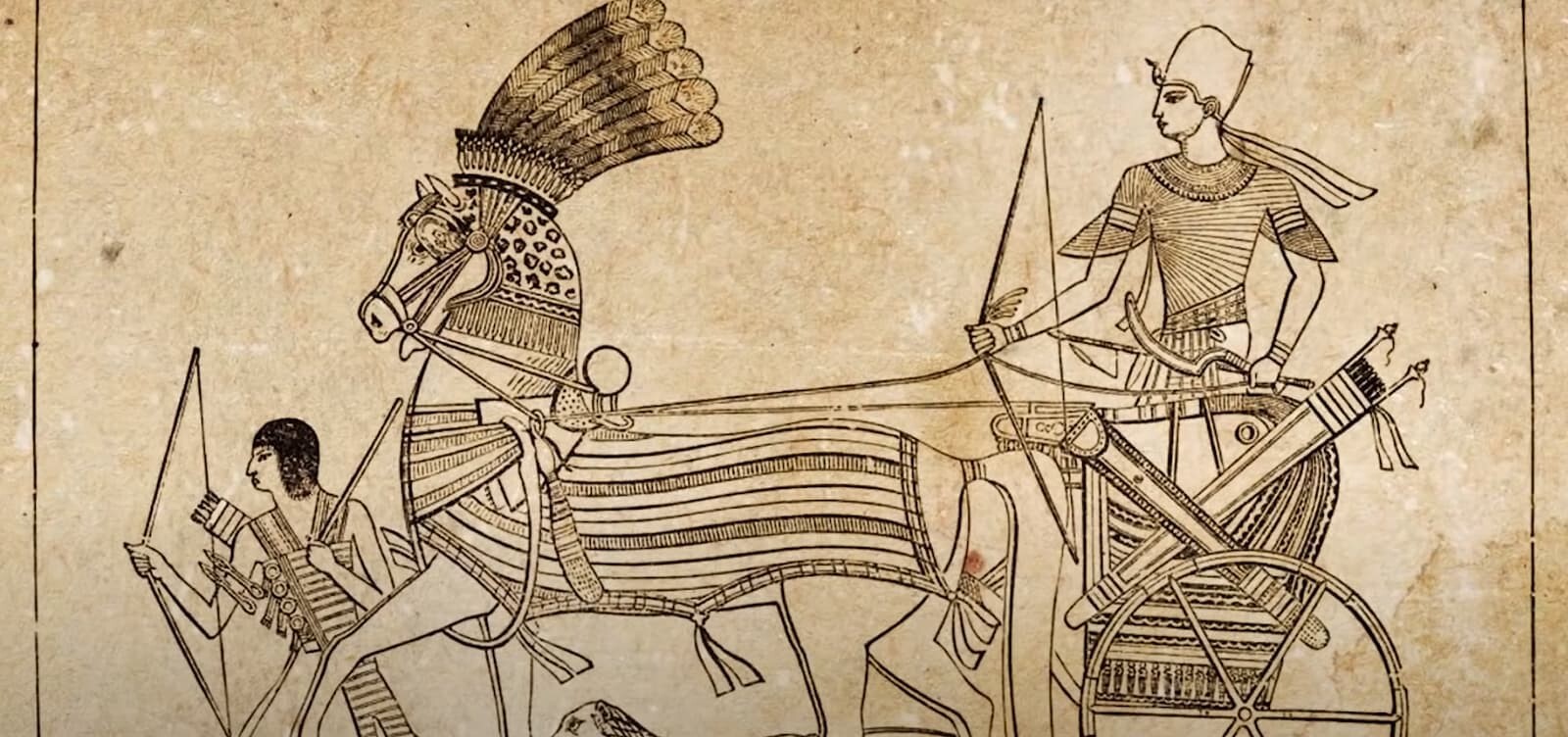
The Mannaean-Assyrian War, a series of intense conflicts between the Mannaean kingdom and the Neo-Assyrian Empire, unfolded during the 8th and 7th centuries BC. What sparked these clashes? The Mannaean kingdom, located in northwestern Iran, found itself caught between the powerful Assyrian Empire and the rival kingdom of Urartu. As the Mannaeans sought to expand their territory, they inevitably collided with the Assyrians, who were known for their military prowess and organizational skills. This period saw significant battles, political maneuvers, and shifting alliances, reflecting the complex geopolitical landscape of ancient Mesopotamia. Dive into these 25 facts to understand the key events and figures that shaped this historic conflict.
Key Takeaways:
- The Mannaean-Assyrian War showcased the strength of the Neo-Assyrian Empire's military and the resilience of the Mannaean kingdom in ancient Mesopotamia.
- The conflict highlighted the complex geopolitical landscape of the time, with the Assyrians' proactive warfare and the Mannaean kingdom's adaptability under external pressures.
Geographical Context and Early History
The Mannaean-Assyrian War was a series of conflicts between the Mannaean kingdom and the Neo-Assyrian Empire during the 8th and 7th centuries BC. Understanding the geographical and historical context helps set the stage for these ancient clashes.
-
Geographical Context: The Mannaean kingdom was located in northwestern Iran, south of Lake Urmia, while the Neo-Assyrian Empire was centered in Mesopotamia, with its capital in Nineveh.
-
Early History of Manna: The Mannaean kingdom began to flourish around 850 BC. The Mannaeans were mainly a settled people, practicing irrigation and breeding cattle and horses.
-
Capital City: The capital of the Mannaean kingdom was a fortified city called Izirtu (Zirta).
-
Expansion and Power: By the 820s BC, Manneaea had expanded to become a large state. By this time, they had a prominent aristocracy as a ruling class, which somewhat limited the power of the king.
Conflict with Urartu and Assyria
The region became a battleground between Urartu and Assyria, with Mannaea caught in the middle. This section explores the dynamics of these interactions.
-
Conflict with Urartu and Assyria: The region became contested ground between Urartu and Assyria. In the mid-8th century BC, during the open conflict between the Assyrians and the Urartians, Mannaea seized the opportunity to enlarge its holdings.
-
Height of Power: The Mannaean kingdom reached the height of its power during the reign of Iranzu (c. 725–720 BC).
-
Assyrian Intervention: In 716 BC, king Sargon II of Assyria moved against Mannaea. The ruler Mannaea, Aza, the son of Iranzu, had been deposed by Ullusunu with the help of the Urartians.
-
Assyrian Conquest of Izirtu: Sargon II took Izirtu, and stationed troops in Parsua (Parsua was distinct from Parsumash).
-
Urartian Influence: The Urartians played a significant role in the internal politics of Mannaea, supporting Ullusunu against Aza.
Assyrian Military Strength and Strategy
The Neo-Assyrian Empire was known for its formidable military. This section delves into their military organization and tactics.
-
Assyrian Military Strength: The Neo-Assyrian army was known for its military prowess and organizational skills. They had a well-structured army with various units, including chariots and cavalry.
-
Chariotry and Cavalry: The Assyrian army included chariotry and cavalry units. Chariot drivers were known as "mukil appāte," and cavalrymen were often divided into different units based on their role and location within the army.
-
Administrative Documents: Many administrative supply and logistical documents have been uncovered and translated, providing a detailed understanding of how the Assyrian armed forces were organized.
-
King's Standards: The core of the Assyrian army was the "kisir shari," which roughly translates to the king's standards. These standards were often bred in the mountains and steppes to the north of the Assyrian heartland or captured from neighboring peoples.
-
Military Adaptation: The Assyrians learned from and adapted their style of combat to match that of their opponents. They adopted cavalry and chariot divisions, which were influenced by their interactions with the Mitanni.
-
Horse Training Manual: A horse training manual in Hurrian has been found, and the Hurrian word "marianu" was used in Assyrian texts for chariot driver. The use of the military title "turtanu" also indicates Assyrian adoption of Mitanni military titles.
-
Casside Horsemen: Casside horsemen from the Zagros mountains served the Assyrians as riding specialists. This highlights the Assyrian practice of incorporating skilled horsemen into their military forces.
Proactive Warfare and Neo-Assyrian Period
The Assyrians shifted their approach to warfare, becoming more proactive. This section covers their strategies and the broader context of the Neo-Assyrian period.
-
Proactive Warfare: The Assyrians shifted from a defensive mentality to a proactive approach against their future enemies. This change was necessitated by the threats posed by the Hittites, Babylonians, and resurgent Egypt.
-
Neo-Assyrian Period: The Neo-Assyrian period saw the Assyrian empire at its height, stretching from the Zagros mountains to the Mediterranean Sea. This period was marked by significant military campaigns and territorial expansions.
Achaemenid Assyria and Aftermath
After the fall of the Assyrian empire, the region underwent significant changes. This section explores the aftermath and the rise of the Achaemenid Empire.
-
Achaemenid Assyria: After the fall of the Assyrian empire, the region became part of the Achaemenid Empire. Despite initial devastation, Assyria eventually became one of the wealthiest regions under Achaemenid rule due to its agricultural prosperity.
-
Achaemenid Policy: The Achaemenid Persians did not intervene in the internal affairs of their ruling satrapies as long as they continued to pay tribute and taxes back to Persia. This policy allowed for relative stability and prosperity in the region.
-
Battle of Nineveh: The Assyrian empire descended into civil war in 626 BC, which drastically weakened it. The Battle of Nineveh in 612 BC left Assyria destroyed for years to come. Despite this, remnants of the Assyrian army continued to fight on.
-
Egyptian Intervention: The Twenty-sixth Dynasty of Egypt, also known as the Saïte dynasty, intervened in the conflict to protect their interests. They fought against the Babylonian-Median-Scythian alliance but were ultimately defeated.
-
Final Defeat: The final defeat of the Assyrian remnants occurred at Carchemish in 605 BC. The Babylonian rule was unpopular but did not last long. In 539 BC, Cyrus the Great defeated the Babylonian king Nabonidus and incorporated both Babylon and Assyria into the Achaemenid Empire.
-
Achaemenid Rule: During Achaemenid rule, the former major Assyrian capitals like Nineveh, Dur-Sharrukin, and Kalhu (now Nimrud) were sparsely populated. Most Assyrian settlement was in smaller cities, towns, and villages at plain level, in the mountains, or on mounds such as Tell ed-Der.
Historical Legacy
The Mannaean-Assyrian War reflects the complex geopolitical landscape of ancient Mesopotamia. It highlights the military prowess and organizational skills of the Neo-Assyrian Empire while also demonstrating the resilience and adaptability of the Mannaean kingdom in the face of external pressures.
- Historical Legacy: The Mannaean-Assyrian War reflects the complex geopolitical landscape of ancient Mesopotamia. It highlights the military prowess and organizational skills of the Neo-Assyrian Empire while also demonstrating the resilience and adaptability of the Mannaean kingdom in the face of external pressures.
The Lasting Impact of the Mannaean-Assyrian War
The Mannaean-Assyrian War wasn't just a series of battles; it was a clash of cultures, strategies, and ambitions. The Mannaean kingdom, nestled in northwestern Iran, found itself caught between the powerful Neo-Assyrian Empire and the Urartians. Despite their resilience, the Mannaeans faced significant challenges from the well-organized and formidable Assyrian military. The Assyrian conquest of key cities like Izirtu and their strategic use of cavalry and chariots showcased their military prowess. Meanwhile, the Urartians played a crucial role in the internal politics of Mannaea, further complicating the conflict. This war highlights the complex geopolitical landscape of ancient Mesopotamia and underscores the enduring legacy of these ancient civilizations. The Mannaean-Assyrian War remains a testament to the resilience and adaptability of smaller kingdoms in the face of powerful empires.
Frequently Asked Questions
Was this page helpful?
Our commitment to delivering trustworthy and engaging content is at the heart of what we do. Each fact on our site is contributed by real users like you, bringing a wealth of diverse insights and information. To ensure the highest standards of accuracy and reliability, our dedicated editors meticulously review each submission. This process guarantees that the facts we share are not only fascinating but also credible. Trust in our commitment to quality and authenticity as you explore and learn with us.


